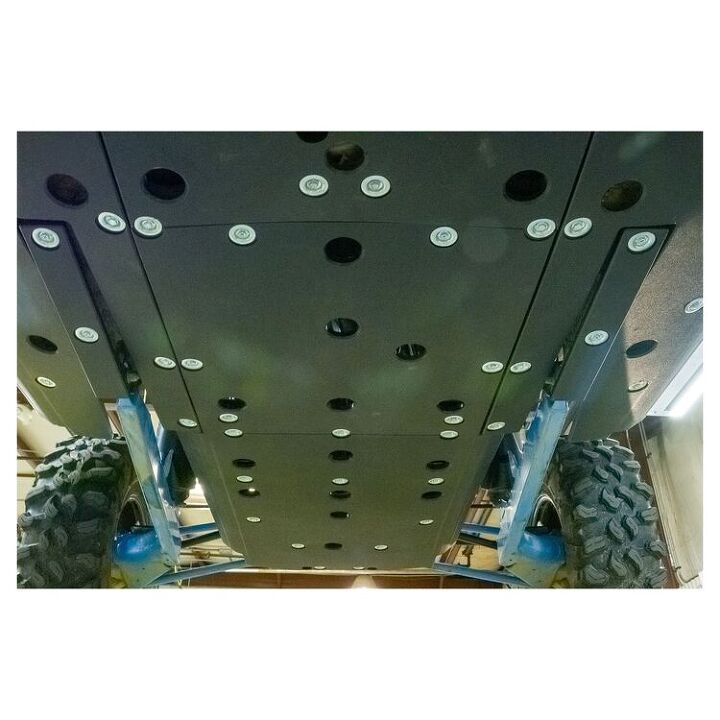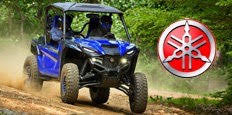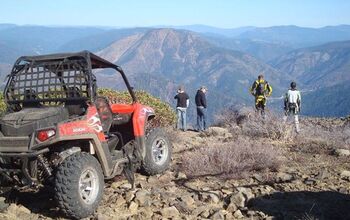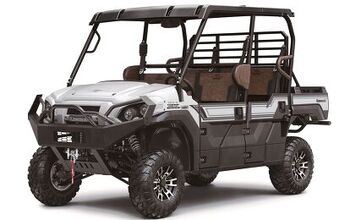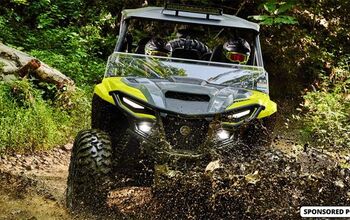Does My ATV or UTV Need Skid Plates?

Skid plates, also known as underbody armor, are protective shields attached to the underside of a vehicle to safeguard its vulnerable components from damage due to rocks, debris, or rough terrain. The necessity of skid plates for an all-terrain-vehicle (ATV) depends on various factors, including the type of terrain, intended use, individual preferences of the rider, riding style, and more. But while the general consensus is “yes,” that doesn’t necessarily mean you need to armor up the entirety of your ATV or UTV's underside.
An ATV's undercarriage comprises critical components like the underside of the engine, transmission, exhaust system, and differential(s), all situated precariously close to the ground. When navigating rocky or uneven terrain, these components are highly susceptible to damage from impacts with rocks, branches, or other debris. Skid plates act as a protective barrier, absorbing the force of impacts and preventing direct contact between these vital parts and the rough ground below.
For those riding primarily on smoother surfaces or well-maintained trails, the need for skid plates might seem less pressing. However, even in such conditions, unexpected encounters with rocks or protruding objects can pose a threat to the ATV's underbelly. A skid plate serves as a proactive defense mechanism, offering peace of mind and protecting against potential damage that could otherwise lead to costly repairs.
Terrain plays a pivotal role in determining the necessity of skid plates. Riders exploring rocky, mountainous, or heavily forested areas are at a higher risk of encountering obstacles that could cause substantial damage to the ATV. In such terrains, skid plates become invaluable, significantly reducing the likelihood of harm to crucial components and ensuring the ATV's longevity.
Another aspect to consider is the riding style and skill level of the user. Novice riders might inadvertently subject their ATVs to harsh impacts while learning to navigate challenging terrain. Skid plates act as a safety net, minimizing the risk of severe damage caused by accidental collisions with obstacles. Still, more experienced riders might want skids as they protect their machines’ vitals from the inevitable collision of ATV and rock (or other inanimate, immovable object).
However, there are scenarios where the need for skid plates might be less pronounced. Riders who stick to well-groomed trails or open fields with minimal debris might find skid plates unnecessary, especially if their ATV model comes with a robust factory underbody protection system. If you’re one of those who stick exclusively to fire roads or use the machine solely for relatively calm, around-the-farm work purposes that don’t jeopardize the vitals of the machine via its underside, skipping a skid is probably a safe bet.
Weight and maneuverability are also considerations. Additional armor in the form of skid plates can add weight to the ATV, potentially affecting its agility and performance, particularly in situations requiring quick maneuvering or handling on more technical trails. This is incremental, but still worth mentioning. Likewise, metal skid plates can prevent a vehicle from easily sliding over a rock, but they do provide protection. For this reason, some choose to go with a high-performance plastic skid made out of something like Ultra High Molecular Weight (UHMW) polyethylene. Note that while these are strong and light, they are more prone to breaking than conventional metal skids.
Furthermore, the cost factor cannot be overlooked. Skid plates are aftermarket accessories and might not be included in the standard ATV configuration. Purchasing and installing these protective shields can add to the overall cost of owning an ATV, making it a discretionary expense for some riders. A full set of skids used to run
It’s worth noting that skid plates come in many shapes, sizes, and materials. Sport quads generally only need a skid for the rear swing arm while those beating up 4x4s, which have quite a bit more in the way of running gear that can sustain ride-ending injury, should probably err on the side of caution and armor up. In the off-roading world it’s generally better to prevent a problem that have to deal with it after the fact; that goes for armoring up as much as any other aspect.
Ultimately, the decision to equip an ATV with skid plates boils down to a balance between proactive protection and practicality. For riders traversing rugged terrains or prioritizing the longevity and safeguarding of their ATV's undercarriage, skid plates offer invaluable insurance against potential damage. Conversely, riders operating in smoother terrains with minimal debris might find skid plates less essential, considering the trade-off between added protection and potential constraints on maneuverability and cost.

Ross hosts The Off the Road Again Podcast. He has been in the off-road world since he was a kid riding in the back of his dad’s YJ Wrangler. He works in marketing by day and in his free time contributes to Hooniverse, AutoGuide, and ATV.com, and in the past has contributed to UTV Driver, ATV Rider, and Everyday Driver. Ross drives a 2018 Lexus GX460 that is an ongoing build project featured on multiple websites and the podcast and spends his free time working on and riding ATVs.
More by Ross Ballot








